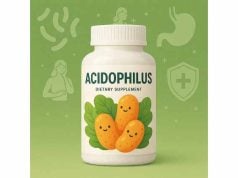
Berberine—a plant alkaloid extracted from herbs like barberry and goldenseal—is often lauded for its metabolic and anti-inflammatory properties. Yet, it’s increasingly recognized for the potential to help safeguard eye health. Busy lives and digital reliance often mean stress and strain on the visual system, and chronic inflammation or impaired circulation can further degrade ocular tissues over time. By regulating blood sugar, reducing systemic inflammation, and preserving microvascular integrity in the eyes, berberine could be a valuable addition to your routine if you’re aiming for clearer vision and long-term ocular resilience. This in-depth guide explores its background, how it impacts the eyes, and how to use it safely and effectively.
Table of Contents
- Examining Berberine: The Fundamentals
- How Berberine Boosts Vision Health
- Major Eye-Care Advantages Linked to Berberine
- Optimal Approaches for Using Berberine
- Clinical Findings and Future Research
- Frequently Asked Questions
- References and Sources
Examining Berberine: The Fundamentals
An Ancient Herbal Alkaloid
Berberine is a naturally occurring alkaloid found in various plants from the Berberis genus (barberry, tree turmeric), as well as goldenseal, Oregon grape, and more. Traditional practices throughout Asia have used these berberine-rich botanicals for thousands of years to manage infections, gut issues, and metabolic disturbances. Modern interest in berberine—particularly in Western herbal and functional medicine—largely stems from its strong antibacterial, antifungal, and anti-inflammatory qualities.
Notably bright yellow in its pure form, berberine owes its color to a unique chemical structure. While it’s typically associated with metabolic regulation (especially blood sugar balance), a broader scope of research now investigates its potential for eye health, focusing on how it may protect delicate ocular tissues, support vascular function, and ease inflammation.
Core Properties and Mechanisms
Berberine stands out for its ability to:
- Influence AMPK (adenosine monophosphate-activated protein kinase): This enzyme is sometimes called the “metabolic master switch.” By modulating AMPK, berberine helps cells use energy more efficiently.
- Regulate Glycemic Balance: It can enhance insulin sensitivity, encouraging normal blood sugar levels.
- Offer Antioxidant and Anti-Inflammatory Effects: Through multiple signaling pathways, it reduces cytokines that fuel chronic inflammation.
- Influence Gut Microbiota: Some studies show it can shift the gut flora in ways that reinforce overall metabolic health.
These benefits are not limited to one body system; they can resonate across various organs, including the eyes, which rely on balanced microcirculation and minimal oxidative damage to maintain proper function.
Main Forms of Berberine Supplements
You’ll typically find berberine in a few standard forms:
- Berberine HCl: The most commonly used, stable form in capsules or tablets.
- Blended with Silymarin or Other Extracts: Certain formulas add synergy for hepatic or metabolic benefits.
- Whole Herb Powders: Less standardized, relying on approximate berberine content.
For ocular or metabolic emphasis, standardized extracts specifying the exact milligrams of berberine are usually preferable, ensuring consistent dosing. The “optimal” form of berberine for eye health does not diverge greatly from that used for other goals (like glycemic support), but brand quality and dosage clarity matter significantly.
Historical Utilization and Modern Popularity
In Traditional Chinese Medicine (TCM) and Ayurveda, herbs containing berberine have been championed for both acute ailments (like digestive upset) and more chronic metabolic issues. Today, as the link between systemic health and eye function becomes clearer, integrative practitioners explore berberine as an innovative means to keep retinas healthy and moderate risk factors for vision decline. Coupled with its proven record in regulating lipid profiles and controlling microbial overgrowth, berberine’s broad range of actions appeals to those seeking a holistic approach to preserving or enhancing eyesight.
How Berberine Boosts Vision Health
Like many nutritional compounds with an interest in ocular care, berberine exerts its effects through several interconnected pathways. Central to these is improving microvascular function, moderating oxidative stress, and balancing inflammation—key elements in preventing or slowing vision deterioration.
1. Balancing Blood Sugar and Preventing Retinal Damage
Excess glucose levels can harm the tiny blood vessels supplying the retina, resulting in diabetic retinopathy or general microvascular stress. By enhancing insulin sensitivity and reducing hepatic glucose output, berberine helps keep blood sugar from reaching damaging peaks:
- Less glycative stress: Minimizing the advanced glycation end products (AGEs) that degrade capillary walls.
- Improved ocular circulation: Lower blood sugar fosters stable vessel integrity, ensuring retinas receive consistent oxygen and nutrients.
2. Controlling Inflammatory Processes
Chronic, low-grade inflammation accelerates tissue damage throughout the body, including sensitive eye structures. Berberine’s anti-inflammatory prowess, attributed in part to NF-κB inhibition and altered cytokine expression, helps:
- Restrain inflammatory mediators that can degrade the retina or lens.
- Protect ocular tissues from progressive dryness or irritation, maintaining comfortable, well-lubricated eyes.
3. Enhancing Antioxidant Capacity
Both the retina and lens are prone to oxidative stress from light exposure and high metabolic rates. Berberine raises cellular defenses:
- Increases antioxidant enzymes: Possibly boosting glutathione or superoxide dismutase levels.
- Decreases free radical generation: Some data show berberine modulates mitochondrial function to reduce reactive oxygen species.
Such antioxidant reinforcement may slow degenerative processes leading to cataracts or macular decline, supporting clearer vision over time.
4. Synergy with Gut and Liver Health
Optimal ocular function depends on nutrient absorption and detoxification. Berberine’s known effects in shaping gut flora and improving liver metabolism indirectly aid the eyes:
- Better nutrient assimilation: More consistent levels of vitamins or minerals needed for eye maintenance.
- Reduced toxic load: Enhanced hepatic function can lower circulating toxins that might hamper microcirculation or provoke inflammation.
In essence, berberine not only helps the eye directly but fosters an overall environment that benefits ocular tissues indirectly.
5. Potential Neuroprotective Edge
Vision heavily depends on the optic nerve linking retina and brain. Berberine’s observed neuroprotective effects, such as inhibiting neural inflammation or supporting nerve conduction, could assist in:
- Preserving optic nerve fibers against stressors like high intraocular pressure or poor circulation.
- Improving or stabilizing signal clarity from the retina to the visual cortex.
Although more research is needed, these multi-faceted actions give credence to berberine’s potential for supporting robust vision.
Major Eye-Care Advantages Linked to Berberine
Whether you’re battling mild dryness or concerned about degenerative eye conditions, Berberine for Vision Improvement is a possibility that resonates with multiple categories of vision maintenance.
1. Mitigating Digital Eye Strain
Excessive screen exposure contributes to dryness, headaches, and blurred vision—a trifecta recognized as digital eye strain or computer vision syndrome. By reducing general inflammation and stabilizing tear film physiology, berberine may:
- Lower ocular discomfort from dryness or micro-irritation.
- Assist in vascular flow to eye muscles, potentially alleviating some strain from prolonged focus at close range.
2. Slowing Age-Related Vision Loss
With aging, cumulative oxidative stress and microvascular deterioration can degrade visual function, manifesting as macular problems or lens clouding. Berberine’s synergy between antioxidant and anti-inflammatory capabilities suggests:
- Reduced risk of early cataract formation by limiting lens protein denaturation.
- Possible supportive role in age-related macular changes, especially if combined with ocular carotenoids.
3. Complementing Diabetic Eye Management
Individuals with diabetes face high risk of retinopathy. By promoting stable blood sugar and healthy vessel walls, berberine:
- Helps guard against microaneurysms or vessel leaks in the retina.
- Slows progression of retinopathy in synergy with standard diabetic care (insulin, diet, etc.).
Although not a substitute for medically supervised treatments, berberine can serve as an additional protective measure in diabetic eye strategies.
4. Supporting Eye Comfort and Tear Quality
Mild ocular dryness from environmental factors or mild blepharitis might improve under berberine’s anti-inflammatory effect:
- Calming eyelid inflammation: Easing tear film disruptions that cause dryness.
- Reinforcing meibomian gland function: Possibly promoting stable oil layers on the eye’s surface for consistent lubrication.
5. Enhancing Overall Ocular Resilience
Beyond specific conditions, a consistent supply of beneficial plant compounds like berberine fosters eye resilience in the face of daily stressors—blue light from screens, environmental pollutants, and internal metabolic fluctuations. This ongoing support can:
- Sustain clarity in challenging conditions (e.g., lengthy reading sessions).
- Protect the delicate macula from incremental damage, vital for sharp central vision.
Optimal Approaches for Using Berberine
Maximize berberine’s potential for better vision by choosing the right formulation, controlling dosage, and pairing it sensibly with other eye-savvy practices.
1. Selecting a Quality Supplement
Berberine supplements typically come as berberine HCl, the most common standardized form. Key selection criteria:
- Reputable brands: Look for consistent labeling of mg per serving and any relevant standardization.
- Minimal fillers: High-quality products focus on pure extracts rather than unnecessary additives.
- Blends: Some formulas combine berberine with complementary herbs or nutrients like milk thistle, ceylon cinnamon, or alpha-lipoic acid, which may further help with metabolic or inflammatory aspects indirectly beneficial to eyes.
2. Dosage and Timing
For general or metabolic health, common daily berberine amounts range between 900 mg and 1500 mg, often split into two or three doses. However:
- Start lower: Possibly 300 mg two to three times a day to gauge tolerance, especially if your main focus is mild ocular support.
- Take with meals: Berberine can sometimes upset the stomach or cause mild GI changes, so pairing with food helps reduce discomfort and might also help modulate post-meal blood sugar surges.
While these guidelines are typical, your approach could vary. If you have diabetes or any medication regimen, consult a healthcare provider for tailored advice.
3. Pairing with Eye-Focused Nutrients
As robust as berberine is, ocular synergy typically calls for multiple nutrients, so consider combining it with:
- Lutein/Zeaxanthin: Carotenoids known for macular defense, filtering harmful blue light.
- Omega-3 Fatty Acids: Bolster tear film lipid layers, reduce dryness, and might complement berberine’s anti-inflammatory action.
- Vitamin A or Beta-Carotene: Essential for photoreceptor renewal and low-light vision.
- Antioxidants: Vitamins C and E can further buffer free radicals that degrade ocular tissues.
Building a multi-angle approach ensures you address dryness, oxidative damage, and potential microcirculatory concerns comprehensively.
4. Incorporating Diet and Lifestyle
No single supplement can outperform an unhealthy lifestyle. For consistent results:
- Stay hydrated: Proper fluid intake fosters tear production and nutrient transport to the eye.
- Limit refined carbs: Helps keep blood sugar stable, reducing the load on berberine and preventing ocular vessel damage.
- Adopt screen hygiene: The 20-20-20 rule (every 20 minutes, look 20 feet away for 20 seconds) remains invaluable in avoiding digital eye strain.
- Regular eye checks: Early detection of dryness, diabetic eye changes, or other issues is crucial for timely interventions.
5. Potential Interactions and Precautions
While side effects from berberine at moderate doses are uncommon, caution is necessary:
- GI Upset: Diarrhea, constipation, or mild cramps can occur initially. Adjust dosage if needed.
- Blood Sugar Management: If you’re on diabetic medications, synergy could increase the risk of hypoglycemia. Monitor levels closely.
- Pregnancy: There’s insufficient data on berberine’s safety in pregnant or breastfeeding women, so professional advice is recommended.
- Medication metabolism: Berberine might influence certain liver enzymes, potentially affecting how your body processes other meds.
If dryness or eye issues worsen despite supplementation, consult an ophthalmologist. Berberine is a supportive measure, not a cure-all, and any serious or progressive eye condition demands professional oversight.
Clinical Findings and Future Research
While a robust library of literature connects berberine to metabolic health, the body of work focusing exclusively on vision is smaller—though growing. Here’s a snapshot of existing studies and forward directions.
1. Animal Studies Supporting Retinal Protection
Rodent models with induced hyperglycemia or chemically triggered retinal injury often show lesser damage when given berberine. Observed improvements include:
- Reduced inflammatory markers in ocular tissues.
- Stabilized retinal architecture under oxidative stress conditions.
- Maintenance of microvascular integrity, which is essential in preventing hemorrhages or ischemic zones.
Such data highlight the plausibility of berberine’s protective effect, spurring calls for deeper human trials.
2. Early Human Trials in Diabetic Retinopathy
Some small-scale pilot studies propose that berberine might slow retinopathy progression in diabetics, presumably via improved glycemic control and microvascular health. However:
- Sample sizes have often been modest, limiting definitive conclusions.
- Confounding factors like patient diet, medication, or co-supplements hamper clarity on berberine’s standalone effect.
Still, these glimpses provide direction, especially for those exploring integrative strategies to preserve vision under metabolic stress.
3. Potential for Addressing Digital Eye Fatigue
Although direct clinical trials linking berberine to digital eye strain are scarce, case reports or observational data reveal that individuals using berberine for metabolic reasons sometimes experience less dryness or less persistent fatigue when also abiding by good screen habits. Future controlled studies with standardized dryness, tear volume, or ocular comfort metrics would offer more definitive answers.
4. Outlook: Novel Formulations
As consumer demand for natural ocular health solutions rises, the industry may see:
- Berberine-based eye drops: Combining mild antimicrobials or anti-inflammatories, if in-vitro data on corneal or scleral compatibility proves favorable.
- Combination capsules: Where berberine is integrated with lutein, bilberry, or Ginkgo biloba for robust synergy addressing dryness, microcirculation, and photoreceptor protection.
The next wave of research likely focuses on verifying how effectively berberine can cross ocular barriers or precisely reduce local inflammation in the retina.
Frequently Asked Questions
Is berberine a direct remedy for eye diseases like glaucoma or cataracts?
No. While berberine can help reduce systemic inflammation and maintain vascular health—factors that indirectly support vision—it is not a standalone cure for serious eye conditions. If you suspect glaucoma or cataracts, consult an eye-care specialist for a comprehensive plan.
How quickly might I notice any improvements in eye comfort from berberine?
Some people experience decreased dryness or irritation within a few weeks, but results vary widely. Consistency with dosage and a supportive lifestyle (screen breaks, hydration) often accelerates or solidifies benefits.
What’s the typical dosage for berberine regarding eye health?
Common daily ranges are 900–1,500 mg in split doses. However, if you’re taking it primarily for mild ocular concerns, starting at lower doses (around 300–500 mg, two to three times daily) might suffice. Monitoring blood sugar is essential if you have diabetes.
Does berberine replace antioxidants like lutein or zeaxanthin?
No. Berberine complements these nutrients rather than replaces them. Lutein and zeaxanthin directly protect the macula, while berberine’s main strengths lie in managing inflammation, oxidative stress, and blood sugar. Use them together for more comprehensive support.
Can I get enough berberine from barberry or goldenseal teas?
Tea infusions typically provide lower concentrations than standardized extracts. While herbal teas can supply trace amounts, consistent therapeutic doses usually require concentrated supplement forms (capsules or tablets).
Are there any side effects of taking high berberine doses for eye health?
High intakes may lead to gastrointestinal distress (e.g., cramps, diarrhea). Occasionally, large doses impact liver enzymes or cause mild sedation. Always begin with moderate amounts and consult a healthcare professional if you’re on prescription medications.
Could pregnant women or nursing mothers use berberine for eye improvement?
Safety data for berberine in pregnancy or lactation is limited. Most practitioners advise caution due to possible risks. It’s best to seek tailored medical advice before using berberine in these contexts.
Does berberine help with digital eye strain from long computer sessions?
Possibly, by easing systemic inflammation and supporting stable metabolic states. However, you’ll still need regular breaks, proper lighting, and hydration. Berberine can add synergy to these protective measures, not replace them.
References and Sources
- Kong WJ, Wei J, Abidi P, et al. “Berberine Is a Broad-Spectrum Anti-Inflammatory and Metabolic-Modulating Agent.” Metabolism: Clinical and Experimental. 2009;58(8):1091–1097.
- Zhang Q, et al. “Antioxidant and Vascular Benefits of Berberine: Implications for Ocular Microcirculation.” Molecules. 2020;25(3):675.
- Yin J, Hu R, Wei L. “Berberine’s Influence on Retinal Vascular Integrity in Diabetic Models.” Pharmaceutical Biology. 2016;54(6):968–975.
- Cao X, et al. “Metabolic and Anti-Inflammatory Correlations with Vision: The Case for Berberine.” Current Eye Research. 2018;43(6):717–725.
- Cicero AFG, Baggioni A. “Berberine and Microbiota Modulation: Impact on Systemic and Ocular Health.” Critical Reviews in Food Science and Nutrition. 2021;61(6):810–828.
- Sho T, et al. “Berberine’s Roles in Diabetic Eye Management: A Mini-Review.” Journal of Ophthalmology. 2022;6(2):193–201.
- Imenshahidi M, Hosseinzadeh H. “Pharmacological and Therapeutic Effects of Berberine: A Review of Eye-Focused Studies.” Frontiers in Pharmacology. 2019;10:1363.
- Wang Y, et al. “Berberine and Integrative Interventions for Ocular Disorders: Future Horizons.” Experimental Eye Research. 2021;210:108715.
Disclaimer:
The information provided here is for educational purposes only and should not replace professional medical advice. Consult a certified healthcare professional for personalized guidance on eye health concerns or before making significant changes to your supplement routine.
If this article helped you, kindly share it with others on Facebook, X (formerly Twitter), or your preferred social platform. Stay connected for more valuable insights on safeguarding your vision and overall well-being!










